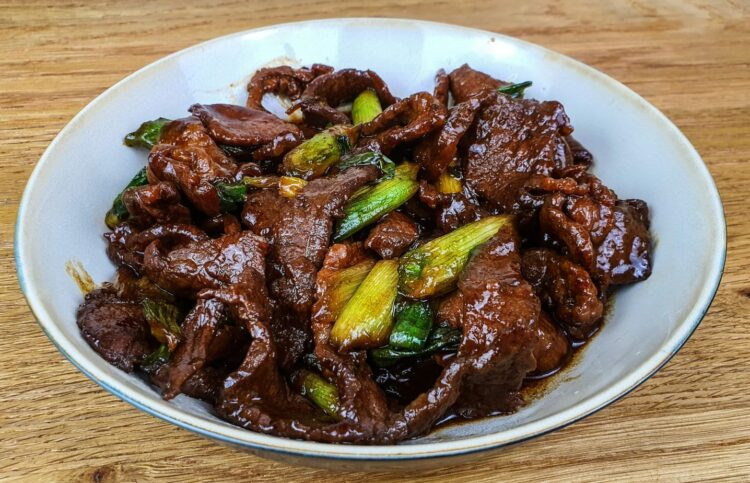If you enjoyed the caramelized pork, you’ll love the caramelized beef. It’s a sweet combination of the best flavors in cooking: sugar, salt, and fat.
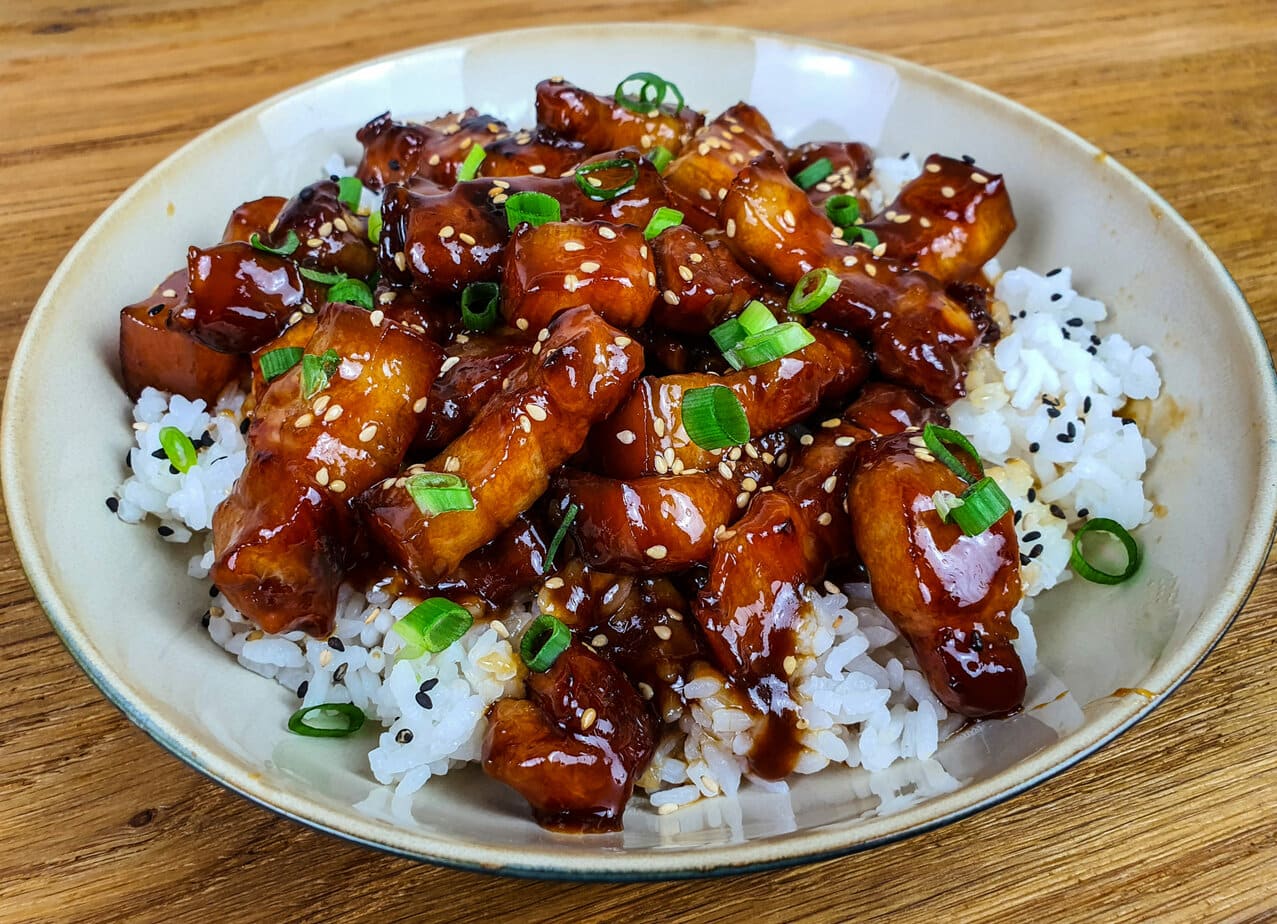
This is my latest culinary exploration of Asian caramels: the art of making a caramel sauce combined with a salty Asian sauce and faaaaat. The recipe draws its main inspirations from Chinese cuisine but could just as easily be Japanese if you replace the Shaoxing wine with sake.
Note: for a healthier alternative to caramelized beef, I refer you to my honey beef recipe
Ingredients for caramelized beef
Well, if there was a recipe that I would define as simple on my site, it’s this one. Whether it’s the complexity of the procedure or the number of ingredients, both are extremely simple for caramelized beef.
Shaoxing wine: If you want to substitute it, check out my full article on the subject, but I really recommend investing in a bottle. Given the number of my recipes that use it, the bottle pays for itself very quickly, in addition to bringing a unique and typical flavor. In short, BUY IT.
Light soy sauce and dark soy sauce: It’s important not to confuse them, they both have different functions. While light soy sauce can serve as a substitute for adding salt to season the dish, dark soy sauce has a much stronger taste and brings a real nuance to the flavor of the dish. In short, if you want to learn more about different soy sauces, I have a very comprehensive article on the subject.
Green onions: Some people have asked me if they could substitute them with chives. Well, yes but no.
If you want caramelized beef, you’ll need to buy green onions. If you use chives, asparagus, or bell peppers instead, it might be very good, but it won’t be the caramelized beef as I’ve developed it.
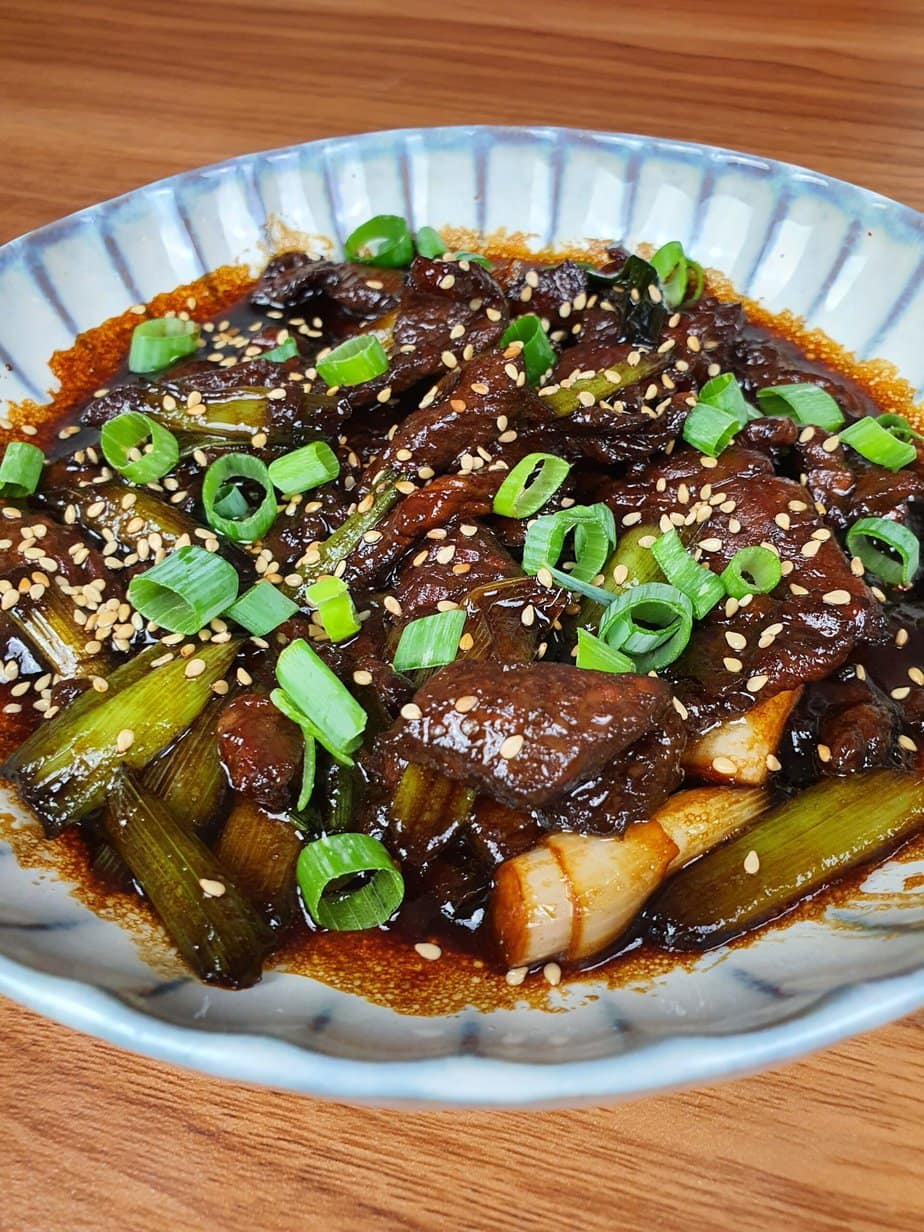
You can, however, add minced garlic or sliced onion, both can add a lot to the flavor. If you’re lucky enough to have easy access to young garlic, then feel free to use it instead of green onions.
Tips for successful caramelized beef
Patience: when I say caramel texture, it really needs to be caramel texture. This is the key to the dish’s success.
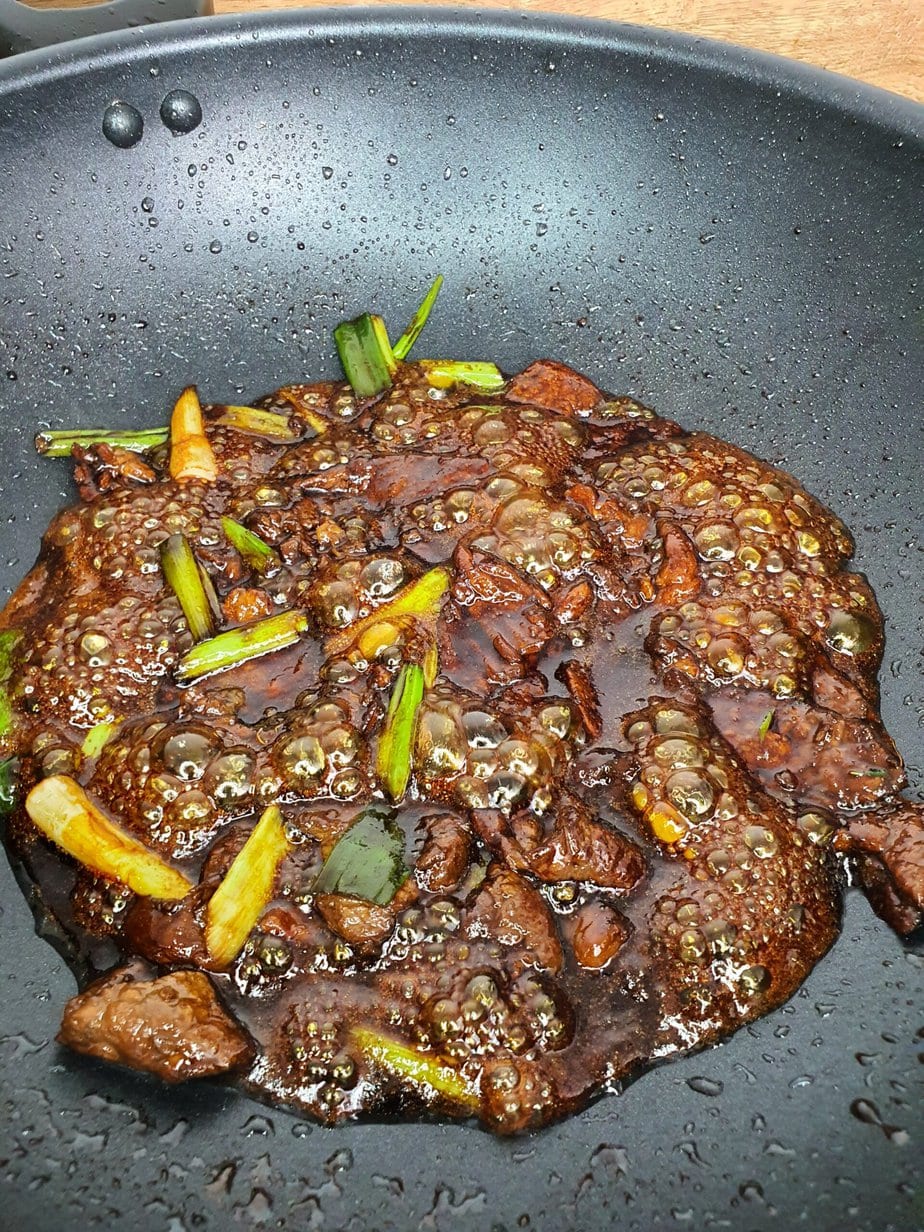
For the beef cut, choose one that cooks quickly. A ribeye, for example.
You can replace Shaoxing wine with sherry, but really, it adds to the flavor and you can find it online here
Whether pork or beef, Asian caramel is delicious. I also incorporate caramel in my beef udon noodles and if you’re not sure how to choose your soy sauce, come discover my comprehensive article on different types of soy sauces
How to accompany caramelized beef
Well-washed sushi rice before cooking is ideal as an accompaniment. The caramel sauce pairs wonderfully with it, and I can only recommend this.
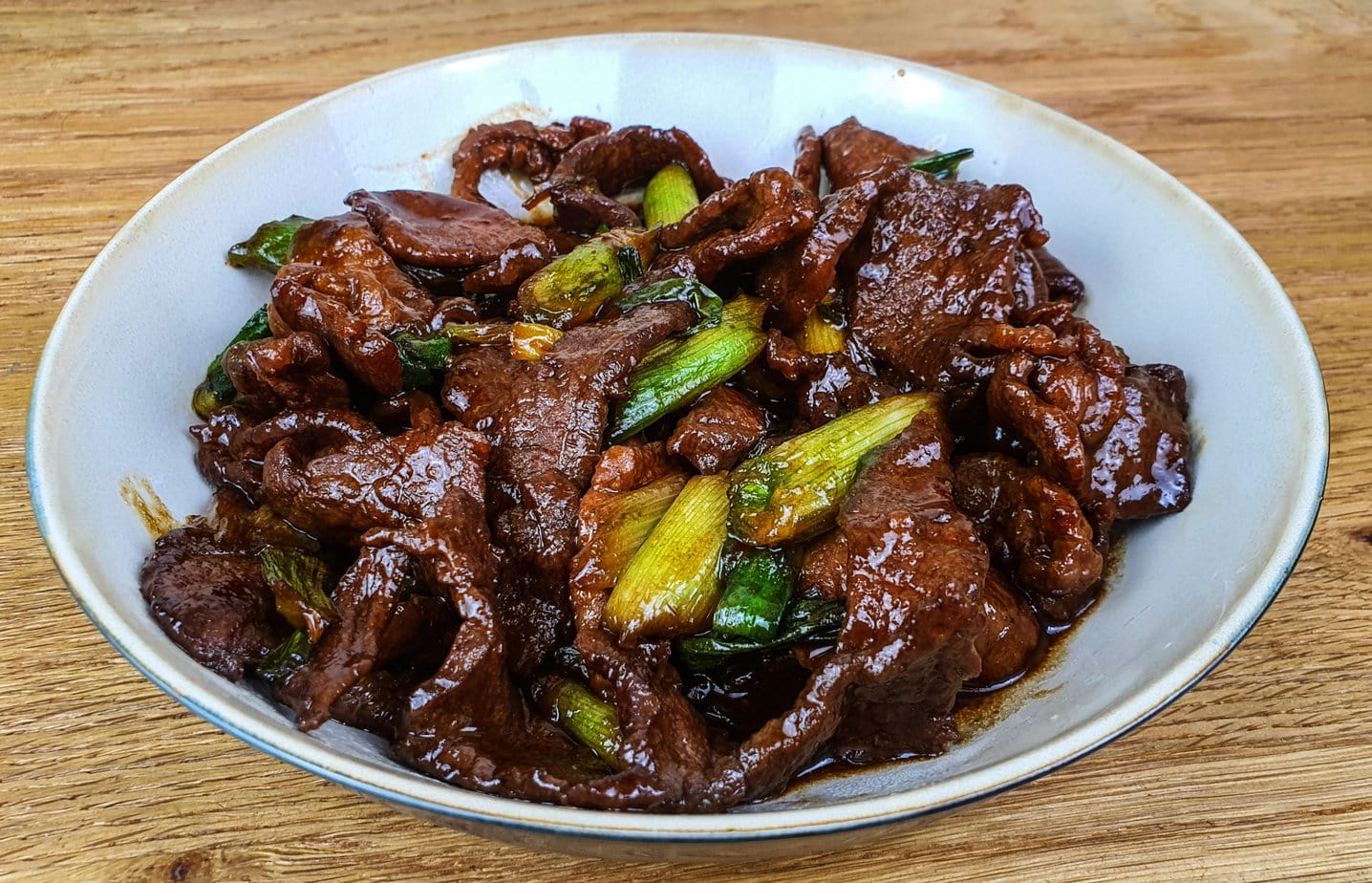
Ingredients
- 2 sliced spring onion shoots
Marinade
- 400 g sliced steak
- 1 tablespoons dark soy sauce
Sauce
- 2 tablespoons white sugar
- 7 tablespoons of Shaoxing wine
- 2 tablespoon of light soy sauce
- 1 tablespoon dark soy sauce
Instructions
- Mix the sauce in a bowl until the sugar dissolves. Marinate the meat for 10 minutes
- In a Wok over high heat with a little oil, stir-fry the meat for 3 minutes.
- Add the spring onions and stir-fry for 4 minutes
- Set aside. Add a little more oil if needed and put the sauce in the wok (Without the meat and vegetables). Cook over medium-high heat until the sauce thickens and takes on a caramel-like texture.
- Add the meat and vegetables back in and stir for 2-3 minutes. Wait and reduce a bit if the sauce has become liquid again.
- Serve with rice.
